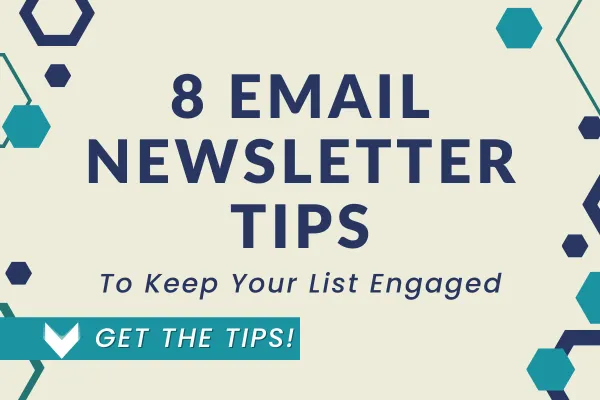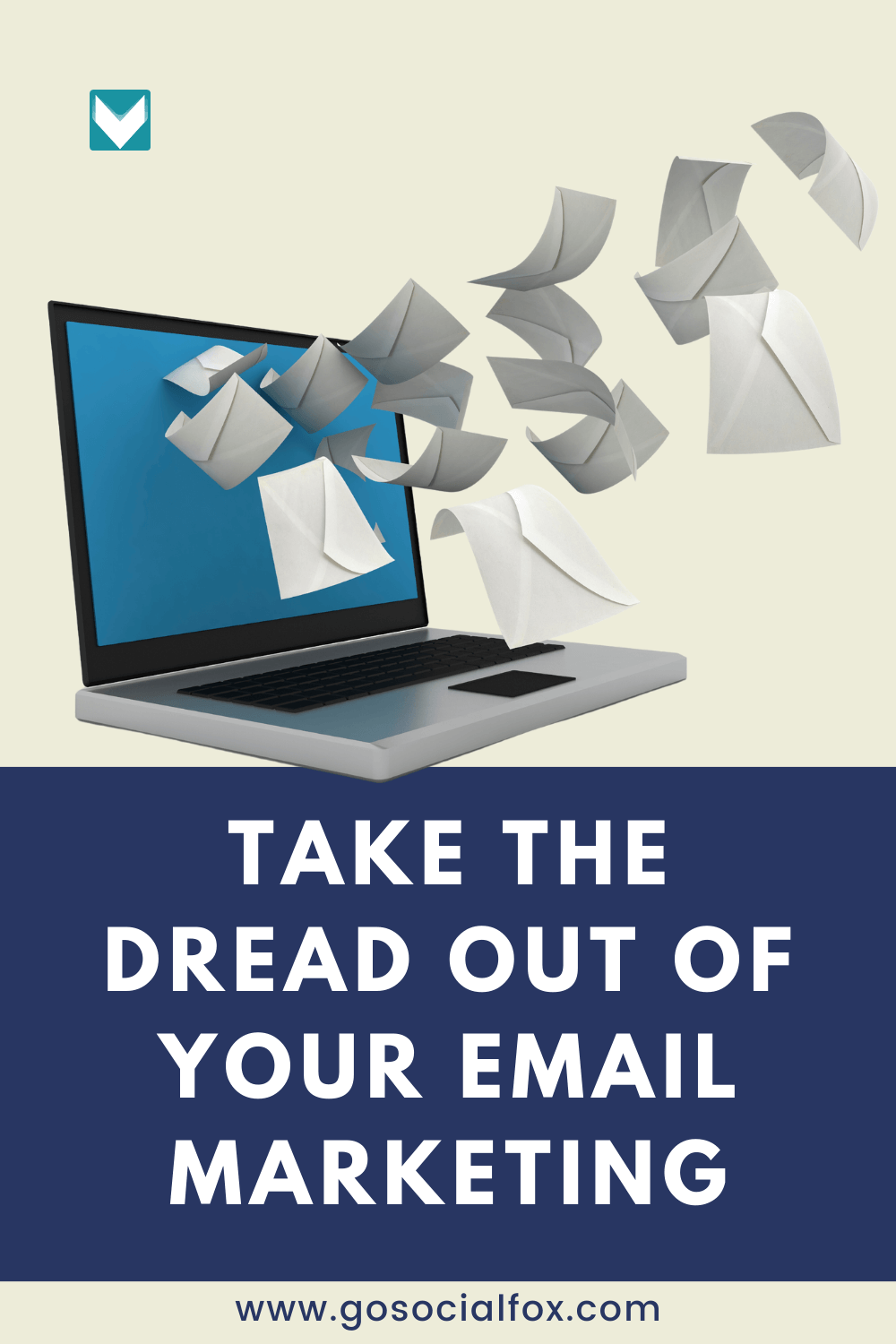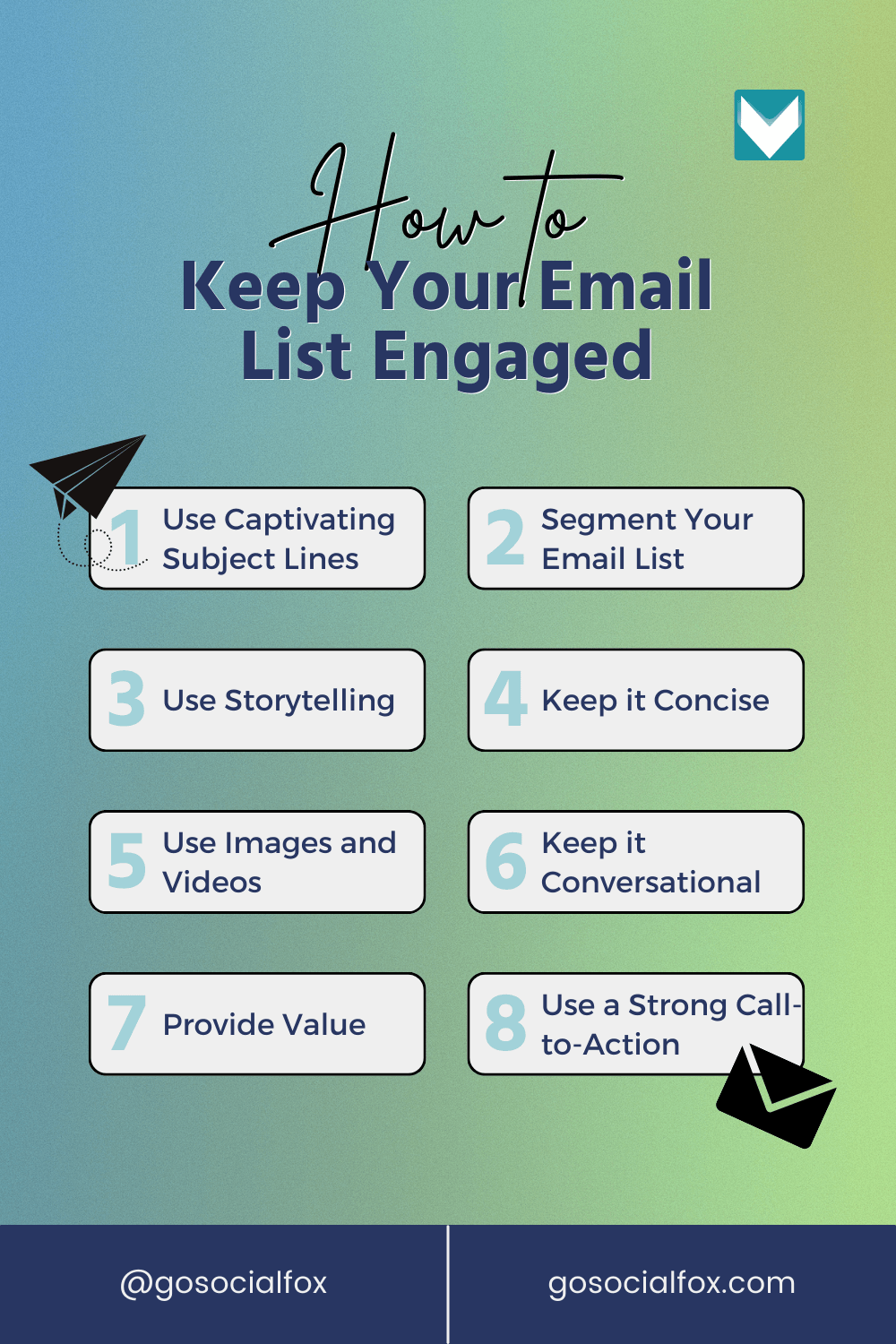

8 Newsletter Tips to Keep Your Email List Engaged [ + Our Storyselling Guide for Crafting Entertaining Newsletters ]
Newsletters got you stuck?
Picture this: You sit down at your computer to write an email [with a mild feeling of dread] because you’ve let another week go by without chatting with your email list… and your brain goes blank. You know you should be emailing your list every week, or at the very least, every month, but when it comes time to write that email, you’ve got no inspiration.
Or maybe this is you: Every week you sit down and craft a weekly newsletter, load it into your email management platform and send it off to your email list. Sitting at the edge of your desk chair you wait patiently for the email replies and sales to roll in and all you get is… crickets.
Whether we want to believe it or not, being in frequent contact with your email list is vital to the success of your business, but hitting the sweet spot in your emails in terms of newsletters can be challenging to say the least.
While some see newsletters as a necessary evil and others are killing it with their newsletter game, the fact remains the same: You need to be in regular content with your email list if you expect to make sales there. Now, don’t take that to mean that you need to be constantly selling your email list, it’s the opposite in fact. If you are constantly selling to your email list you’re likely to see that number decrease over time because you are all take and no give!
Alas, don’t worry, we’re here with our top eight email newsletter tips to get you out of your newsletter funk and into the magical land where engaged email subscribers are looking forward to their next email from you!

Newsletter Tips to Take the Dread Out of Your Email Marketing
Before we dive into our newsletter tips, let’s first set some expectations. Writing any type of copy [newsletters, social media captions, ad copy, etc] takes practice! It’s like going to the gym, you don’t expect to go once and have six pack abs, it takes time and dedication. Not only does copywriting take practice, it’s also helpful to be in the right mindset before even starting. This also takes a little bit of testing and a lot of understanding yourself. Are you a night owl that has their most productive and creative vibes from eight to ten at night or are you an early morning person that likes to do deep work before eight in the morning so there are less distractions?
Trying to force copywriting will almost always leave you with newsletters that are lacking any creative spark and feel forced. Try to take advantage of the times when you feel most inspired and creative and capitalize on your copywriting then. Your audience and engagement rates will thank you.
Aside from copywriting when you feel most aligned, make sure that you’re committed to the process of testing. As with all things in the marketing realm, you have to be super close besties with testing, testing, testing! Don’t be afraid to try different techniques, change up your email formatting, or change how you talk to your audience to see what they respond to best. Let data drive your decisions. You create the test content and your analytics will direct you which way to go from there.
But let’s get into the meat of it all and dive into our first newsletter tip!
Newsletter Tip #1 - First Impressions Matter: Captivating Subject Lines
First impressions aren’t only for meeting new people, they’re for your email marketing too! The subject line is what determines if someone even bothers to open your email at all.
It’s your job to create excitement and curiosity with your subject line. What does this look like? Use a startling statistic, emojis, or the recipient’s name to grab their attention and hook them.
Maybe ask your audience a question or make a bold assumption about them. If you create a little bit of intrigue [or even a touch of controversy] they’ll be curious enough to at least open the email which is how you get your foot in the door.
Newsletter Tip #2 - Understand Your Audience: Email Segmentation
If you missed our post about email list segmentation techniques, you can catch up on the basics here. Email segmentation comes down to understanding the interests of your audience. These can be varied depending on your business or your niche, but they will and should drive the types of content that you’re creating for your audience.
Use the information you know about your audience to help determine engaging newsletter topics for them. If you have a particularly popular lead magnet, or one that performs better than others, expand upon that information.
As you build out and test your newsletter topics, you can create mini-series emails for more in-depth educational information on specific topics, allowing your audience to opt-in to those emails if they’re interested. This can act to further segment your list and provide a little bit of a choose your own adventure vibe for your audience!
Newsletter Tip #3 - Building Personal Connections: Using Storytelling to Inspire
As we find ourselves in the age of the influencer, the necessity for storytelling in our content is even more important. It’s our job to provide value in our email newsletters, yes, but we don’t have to be dry about it.
An email chock full of statistics for your niche is educational and valuable but will it draw people in? No. Will it hold their attention and get them to the end of the email? Probably not. Why? Because it’s boring.
Humans like to be entertained and the amount of time we have to capture people’s attention grows shorter every year. This is where storytelling comes in. For example, which of these sounds more interesting off the bat:
“Let me break down my top 3 tips for a highly converting sales page…”
OR
“Here’s how I took my client’s sales page from zero to 30 daily conversions…”
You could write emails for both of these headlines and they might contain essentially the same information, but the way you’ve framed it is completely different. People want to hear stories and they enjoy learning in this format because it hooks you in and takes you on a journey.
If you’re just getting started with storytelling in your content [or are just looking for some new ideas] be sure to grab our Storyselling Guide that will take your copywriting and business content to the next level.
Newsletter Tip #4 - Keep it Concise: Formatting for Attention Spans
Despite what some might think, newsletters don’t actually have to be long and drawn out. In fact, in many cases, the longer the email, the less likely your subscriber will be to get to the end of it unless you are providing some huge value to the exact right person.
So given that we know that most people’s attention spans are short, you can do a lot with your newsletter formatting to cater to the reader who skims more than reads every word.
Keep your newsletter paragraphs short and to the point [think 1-2 sentence paragraphs] to keep readers interested. You can also try experimenting with bullet point formatting, adding descriptive heading or subheadings, and taking advantage of different font colors or formatting [we like making important words bold so that you can almost scan the bold words only and get the general gist of the email].
Switch up your techniques in your email and see what your audience responds to best and what gets you the most engagement, remember marketing is about all testing to see how your audience responds, and newsletter are no different.
Newsletter Tip #5 - Visual Appeal: Images and Videos [In Moderation]
Now, we’re the first to say that we love the look of a flashy newsletter formatted with huge pictures and videos just as much as the next person, but the downside is that typically, email service providers see an email like that and, at best, assume it’s a promotional email or, at worst, assume it’s spam, and sorts it accordingly.
So as tempting as it can be to add your logo, a fancy header, six GIFs, and a picture of your dog, you want to keep it more simple than that.
Shoot for a newsletter that is mostly text with one to two small images that are impactful and meaningful to the story that you’re telling. Use them to draw attention to specific sections of your newsletter or illustrate important points but don’t go crazy with them.
By using images or videos sparingly, you keep the reader engaged but not overwhelmed with visuals.
Newsletter Tip #6 - Speak Your Audience’s Language: Keep it Conversational
This tip is really all dependent on who your audience is and what your brand voice is. If you have a more formal corporate style brand, then you want to make sure that the tone you write your newsletter in matches that of your brand. For those that have a more casual brand, make sure that your tone reflects that.
We like to write our emails like we write our blog posts: like we’re sitting down to have coffee with a friend. We might make the occasional joke, use informal language [‘it’s’ instead of ‘it is’], and avoid using too much jargon, unless that’s a part of your brand identity.
The goal here is that if your email subscriber met you in real life, they would already feel like they knew you because you’ve been writing to them on a regular basis and they have a good idea of your vibe.
We also find it really helpful to not only proofread your newsletter but to read it out loud. This’ll allow you to adjust things as needed to sound more like a human wrote your newsletter and not your AI best friend.
Newsletter Tip #7 - Provide Mega Value: Solve Pain Points
We’ve talked a bit about providing value in your newsletters and really, isn’t that the whole point? Why else would someone subscribe? They’re looking to you to help them with a pain point they have. If they’re willing to give you their email address, they’ve already seen value in something that you provided them, so capitalize on that and continue to give them the goods!
Reframe your regular communications in your newsletter as if you are earning the right to sell your offer. You’re putting in the footwork in order to set this person up to where they are receptive to your offer when you present it.
Email marketing is typically a long game, your subscriber needs multiple interactions with you in order to feel comfortable buying so be sure to make those interactions meaningful and helpful for them so they seek out your advice.
Newsletter Tip #8 - Do They Hear Your Call? Use a Strong Call-to-Action
Every email, every social media caption, every piece of content that you write should have some type of call-to-action. You know what your customer’s journey looks like for your business, they don’t, so be sure to give them direction on the next step.
Now, as we just said, this doesn’t mean you’re asking for the sale at the end of every newsletter… but you are asking for something.
Maybe you call out your blog post for that week and encourage them to check that out. Maybe you have a YouTube video that expands on the topic you just covered in your newsletter and you direct them there.
A call-to-action can even be as simple as asking them a question or asking them to hit reply and tell you something about themselves.
It’s about getting engagement from them through replies, clicking a link, following a social media page, etc.
And if you’re using an email platform that’s worth anything, set up your system to track who’s engaging and how they’re engaging with your emails [if your current email platform doesn’t do this, don’t worry, Social Fox does].

Make Newsletters Fun and Engaging for You and Your Audience
Newsletters have the ability to create an audience that has bought into you and your story…but in order to get that kind of pull, you have to tell your story first! Use these newsletter tips to change your weekly or monthly emails from just a simple topic summary to a captivating read that lets them get to know not only your business, but also you on a deeper level.
Afterall, if we’re really getting down to it and having a tough love moment… there are other people that provide either your exact services or something really similar. So what sets you apart from them? YOU. People buy from people, they want to get to know you, they want to feel like they know you, so let them!
By drawing your readers in with a grabby subject line for your emails and then keeping them guessing and engaged through your stories and varied visual elements in your emails you can help move past the mental roadblocks around newsletter writing [and re-energize your email list too]. All the while, you’re highlighting the special sauce that makes your business stand out, which is of course, the business owner.
If you want a more specific breakdown of storytelling and how to use this to frame your products, your expertise, or just to improve your copywriting overall, be sure to grab our Storyselling Guide where we layout all the details!
Let Social Fox Help You...
and ultimately be your business growth partner!

© Copyright 2019 - 2025 Be Inspired Now Media, LLC | All Rights Reserved | Privacy Policy | Terms Of Use
